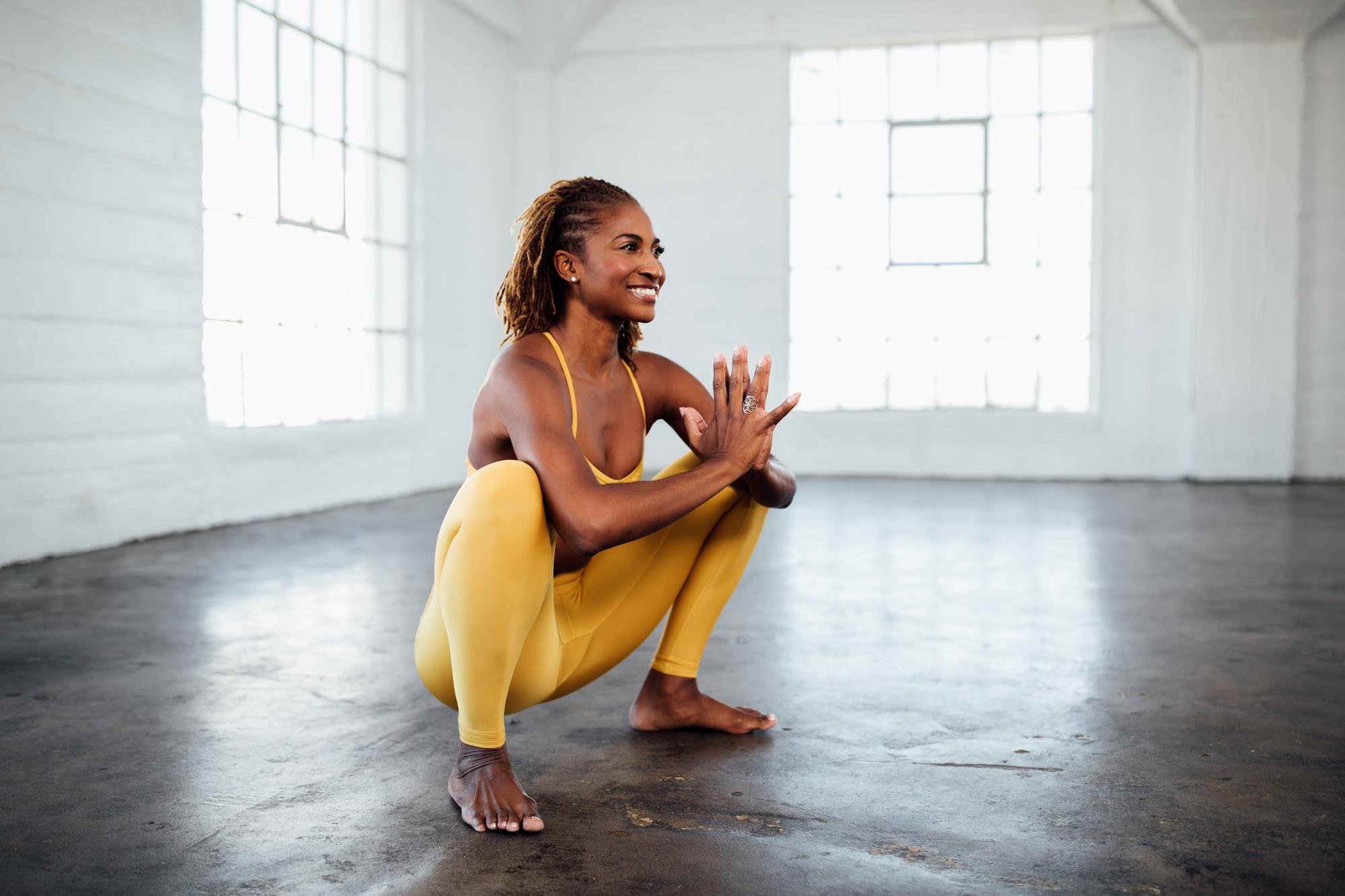Pose Breakdown: Yogi Squat Pose
How low can you go? Yogi Squat Pose (Malasana), also known as Garland Pose, Upavesasana, Sitting-Down Pose, or Prayer Squat, is a squat so deep that it’s almost a seat. Depending on your body, this might feel like a welcome respite in the middle of a busy practice — or it could feel like a challenging hip-opener. Thanks to its generous belly space and pelvic floor strengthening powers, this one’s popular in Prenatal Yoga, although it appears in many styles of yoga.
This flexible pose is easy to modify with props and a little creativity. Make the pose less intense by resting your butt on a block, or experiment with ways to increase the challenge. It’s up to you!
Benefits of Yogi Squat Pose (MALASANA)
Opens your hips
Strengthens your pelvic floor and core
Stretches your thighs, groin, ankles, and feet
Improves balance and focus
When to Avoid Yogi Squat (MALASANA)
Avoid Yogi Squat or speak with your doctor if you have lower back or knee injuries.
Warm-Up Poses for Yogi Squat Pose (MALASANA)
How to Do Yogi Squat Pose (MALASANA)
1. Stand in a natural position with your feet about hip-width apart, feet turned out slightly.
2. Bend your knees as you lower your butt toward your mat to come into a squat. Try to resist the initial urge to lift your heels from the floor — but if they have to lift, that’s OK.
3. Open your thighs wide enough for your torso to come between them. Lengthen your spine.
4. Bring your hands together at your heart in anjali mudra, or prayer position, propping your thighs open with your elbows.
Follow Up Poses for Yogi Squat Pose (MALASANA)
Standing Forward Fold
Supine Twist
yogi squat variations - How to modify malasana
If your heels won’t touch the ground, place a folded blanket under them for added stability.
Practice this pose with your back against the wall to help with balance.
Rest your butt on a chair or a block to take strain off your knees and get a balance assist.
Turn this into a forward fold by walking your arms forward and melting your chest down.
For an extra challenge, experiment with your arm position. You could try one hand on your belly and the other on your heart, extend them forward, twist them into Eagle position, add a bind by reaching behind your back, or whatever else feels appropriate to you.
Malasana Meaning and Background
Do you have a mala that you use for meditation? It’s a looped string of beads, typically with a tassel on the end. If you do, then you’re familiar with the Sanskrit already! “Mala” means “garland” or “necklace” and “asana” means “posture,” “pose,” or “seat,” so you can put it all together for Garland Pose.
The pose name Malasana has been around for a long time, but the actual pose associated with it has changed. In the 19th century text Sritattvanidhi, it describes what we know now as Firefly Pose.
While many popular yoga poses in the West come from (or at least appear in) BKS Iyengar’s work, in his 1966 text Light on Yoga, Malasana is closer, but still different: It’s a squat with two variations, both with your feet together. In one, your arms are wrapped behind your back, and in another, your arms are wrapped behind your calves. In the full expression of either pose, your forehead rests on the floor. (Iyengar says this pose is so named because “in these two poses the arms hang from the neck like a garland.”
Iyengar’s work comes from the lineage of his teacher Tirumalai Krishnamacharya, and many of the poses, especially the ones we practice now, also appear in the work of his fellow pupil Patthabi Jois through Ashtanga Yoga. In this case, Iyengar stands alone, although Pasasana (Noose Pose) from the Ashtanga Intermediate Series is like a twisted version. It’s unclear how Iyengar’s Malasana evolved to remove the bind and widen the legs, but some still practice it his original way!
This pose is also called Upavesasana, and it appears with that name in Leslie Kaminoff’s 2007 book “Yoga Anatomy.” Kaminoff studied under Krishnamacharya’s son T. K. V. Desikachar, so it could come from that lineage, but it doesn’t seem to appear in his popular works. “Upavesa” means “sitting down,” so it’s translated as Sitting-Down Pose.
Practice Yogi Squat in online yoga classes on Alo Moves, available for free with a 14-day trial.


